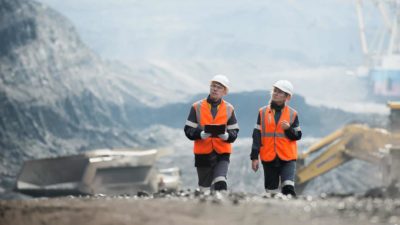The S&P/ASX 200 Index (ASX: XJO) mining shares face an uncertain outlook in FY25, with potentially significant elements impacting the demand side of the commodity equation.
There are a few key businesses and commodities within the ASX 200, so those are the areas I'll focus on in this article. ASX iron ore shares make up the largest commodity exposure within the index, including BHP Group Ltd (ASX: BHP), Rio Tinto Ltd (ASX: RIO) and Fortescue Ltd (ASX: FMG).
Copper and gold miners, including BHP, Rio Tinto, Sandfire Resources Ltd (ASX: SFR), Newmont Corporation CDI (ASX: NEM), Northern Star Resources Ltd (ASX: NST), and Evolution Mining Ltd (ASX: EVN), also hold a sizeable position in the ASX 200 right now.
While there may be uncertainty, there is also some positivity for each major commodity. Let's start with iron ore.
Iron ore
This may be the most important commodity for Australia and the ASX because of how much value it can add to the country's (and households') finances when iron ore prices are good.
The iron ore price is currently at around US$107 per tonne, which is high enough to enable the ASX 200 mining shares to achieve satisfactory profit margins and generate healthy profits in FY25.
However, the price of iron ore has dropped from above US$140 since the beginning of 2024. Can it improve in FY25?
China is usually the key iron ore buyer, but Trading Economics points out that recent data from the Asian superpower is adding to pessimism. House prices in China declined 3.9% year over year in May, the biggest decline since 2015. There has also been "muted industrial output", which "dampened expectations that higher manufacturing growth would drive infrastructure-stemmed steel demand to offset the rout in construction."
Currently, the Chinese government is focused on rolling out measures to address the growing level of housing inventory rather than supporting distressed property developers (who are big users of steel and, therefore, iron ore).
Despite that, Trading Economics' macroeconomic models and analyst expectations suggest the iron ore price could recover to approximately US$126 per tonne in a year from now. If that happened, I imagine investors could be more optimistic about the profit-making potential of the ASX 200 iron ore shares like BHP, Fortescue and Rio Tinto, as it would represent a rise of more than 17% for the commodity price.
Copper
Analysts have become more optimistic about copper as demand increases in some countries worldwide, though the weak demand in China is offsetting some of that positivity.
Macquarie recently increased its copper price forecast for the 2024 calendar year by 7% to US$9,671 per tonne and for the 2025 calendar year by 9% to US$9,575 per tonne. FY25 is made up of the last six months of the 2024 calendar year and the first six months of the 2025 calendar year.
According to Trading Economics, the copper price has fallen more than 10% in recent weeks, though it's still up more than 10% since March 2024.
Trading Economics notes that industrial output in China slowed more than expected in May, heightening concerns that demand will not recover for the world's biggest copper user. Chinese copper inventory is close to a four-year high.
However, with the copper price higher than it was 12 months ago, the ASX's copper miners may be able to generate stronger mining profits if the commodity price stabilises.
Gold
The gold price has risen more than 15% in 2024 to date, to around US$2,330 per ounce.
ASX 200 gold mining shares and the gold price are two different things, but this higher commodity price can help them generate stronger profits if they can execute operationally during FY25.
Inflation and global uncertainty have helped push up the gold price. Gold is seen as a defensive hedge against risk and volatility.
According to Trading Economics, some central banks plan to increase their gold reserves "within a year due to economic and political uncertainty, despite high prices, according to the World Gold Council's survey."







